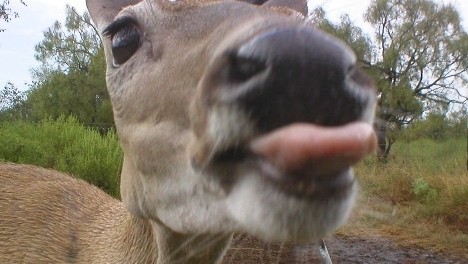
White-tailed deer are primarily browsers. They typically eat very little grass, with most studies estimating grass comprising no more than 7 to 9% of a deer’s diet in any season. Browse consumption is important to deer, but learning to read browse utilization can be important to your overall deer management program. Browse is defined as the leaves, twigs, and buds of woody plants. Browse is the bread and butter of a white-tailed deer’s diet on almost every landscape, but the importance of browse becomes particularly important during the winter months.
Why? Well, winter is the most nutritionally stressful time of the year for deer. Not only does a deer require massive amounts of energy to regulate its body temperature during the coldest part of the year, but food in many cases is not readily available. This is especially true at northern latitudes where extreme winter conditions prevail. In the southern part of the white-tailed deer’s range, winter temperatures are simply mild inconveniences. However, prolonged periods of cold weather at southern latitudes can take its toll on deer populations in this area simply because deer densities are higher. There may be more browse in southern forests, but there are also more deer!
Browse is of the highest importance during the winter simply because during this time of year no other foods exists in great supply. Sure, acorns fall and cool season forbs germinate and grow, but in northern areas even the availability of these foods is short-lived. All browse plants have an order order of preference by deer in each region. Some browse plants will be highly preferred meaning deer relish them, while other plants will be species that deer would prefer to avoid. The later would be browse plants that deer would only consume under looming starvation circumstances.
The importance of browse species important to deer varies by location, but you can tell a lot about a deer population simply by walking through their habitat and examining what they have been eating. For starters, I suggests contacting a wildlife biologist in your area to obtain a list of deer foods by preference and then learning those plants. Not only will this help you identify the important deer food plants on your property, but it will give you a better understanding of the importance of each of those plant species in a deer’s diet.
A quick note: Plants that are highly preferred by deer will always show signs of browsing. Plants that deer really do not like will almost always show signs of no browsing. The key here is to pay attention to those plants in the middle. If those plants show more use than normal, something is going on. Either the deer population in the area is too high or habitat conditions are poor relative to the number of deer. Also, if deer are consuming plants that they would rather not, then deer foods are in very short supply. This can happen during periods of drought or during the winter. This is why deer hunting seasons always takes place just prior to the to most nutritionally stressful time of the year for a white-tailed deer, winter.
So learn the browse plants in your area and pay attention to them. Supplemental feeding can help reduce browsing pressure on your property as a whole, but it should never be considered a total replacement of high-quality native forage. In addition, knowing what white-tailed deer need and eat can help you identify problems before they happen and help can fine tune your deer management program.
I am managing a 6,000 acre lease in east Texas and we are developing criterea for a browse survey. I am looking for a good resourse to help us identify native browse for whitetail deer in east Texas. Can you point me in the right direction?